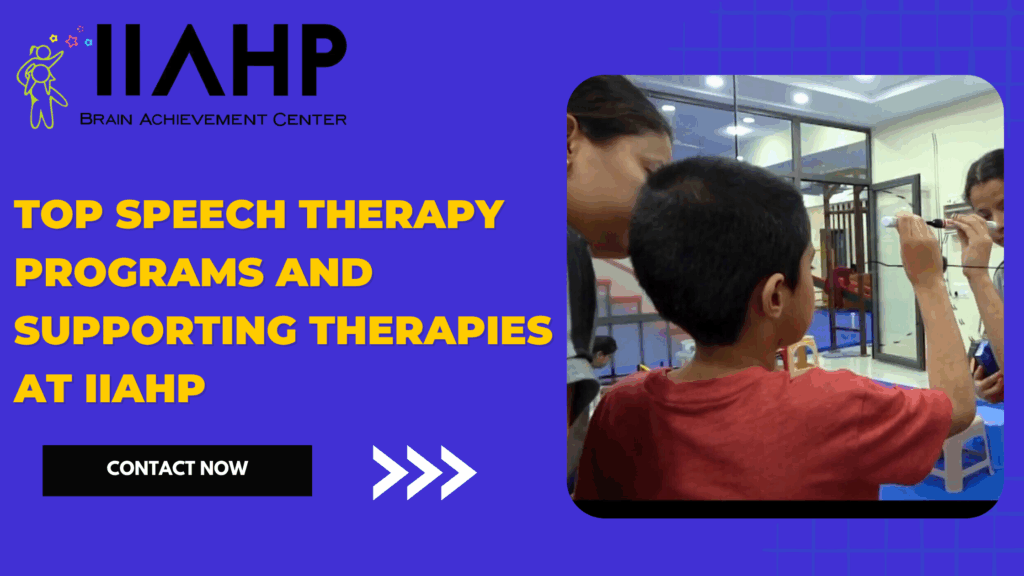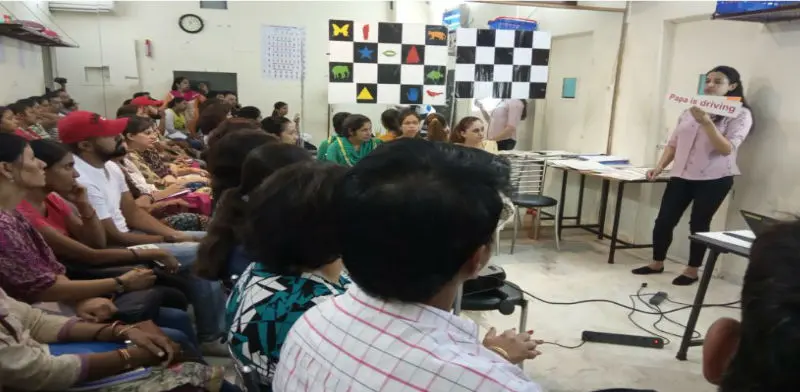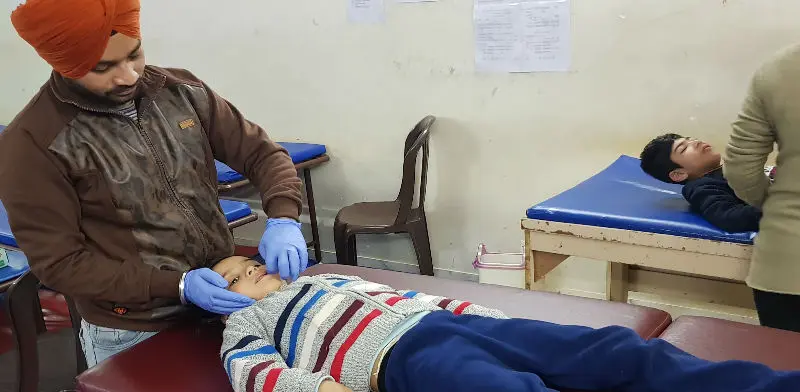Speech and communication form the foundation of learning, social interaction, and independence. For children with autism, Down Syndrome, ADHD, or developmental delays, speech challenges are among the most common concerns. Some children may have delayed speech, while others struggle with pronunciation, vocabulary, comprehension, or fluency.Parents searching for effective speech therapy programs often realize that focusing only on articulation is not enough. Speech development requires support from the brain, body, sensory system, and even nutrition. This is where the IIAHP makes a difference.
IIAHP provides a multi-therapy approach where Speech Therapy is strengthened with complementary treatments like Auditory Integration, Neurodevelopmental Therapy, Sensory Integration, and Euro-Structural Therapy, ensuring faster and long-lasting results.
In this blog, we’ll explore IIAHP’s speech therapy program and highlight all the therapies that support speech and communication development.
Understanding the Role of Speech Therapy
Speech therapy helps children improve their ability to:
- Produce sounds correctly (articulation)
- Develop vocabulary and grammar
- Strengthen listening and comprehension
- Improve non-verbal communication (gestures, expressions)
- Build confidence in social interactions
At IIAHP, therapists create personalized speech plans for each child, but what truly accelerates progress is the integration of multiple therapies that target the root causes of speech delays.
Core Speech Therapy at IIAHP
IIAHP’s Speech and Language Therapy program includes:
- Oral motor exercises to improve tongue, lips, and jaw control
- Vocabulary and grammar building activities
- Pronunciation and articulation practice
- Listening and comprehension training
- Alternative communication methods (signs, gestures, or visuals) for non-verbal children
But this is just one part of the journey. IIAHP integrates speech therapy with other brain and body therapies to maximize outcomes.
Supporting Therapies That Enhance Speech
Here’s a detailed look at the therapies that complement speech therapy at IIAHP
1. Auditory Integration Therapy (AIT)
- Trains the brain to process sounds accurately.
- Improves listening clarity and reduces sensitivity to noise.
- Helps children differentiate sounds, improving speech articulation.
2. Reflex Integration Program
- Addresses retained primitive reflexes that affect oral motor control.
- Improves coordination of lips, tongue, and jaw.
- Supports smoother speech and articulation.
3. Euro-Structural Therapy
- Focuses on body alignment and movement patterns.
- Improves posture and breathing, which directly supports speech production.
4. Archetype Movements & Archetype Therapy
- Stimulates neurological development through specific movement patterns.
- Enhances brain-body connections essential for speech and language.
5. Music Therapy
- Uses rhythm, melody, and song to stimulate speech.
- Helps children practice sounds and words in a fun, engaging way.
6. Audio-Visual Therapy
- Strengthens listening and visual tracking skills.
- Helps children connect sounds with images, improving comprehension and vocabulary.
7. Respiratory Patterning Therapy
- Builds correct breathing patterns, essential for voice and speech fluency.
- Supports better control over speech volume and rhythm.
8. Neurodevelopmental Therapy
- Improves processing speed, memory, and language comprehension.
- Helps children better understand and use spoken language.
9. Balance Board & Brain Gym Exercises
- Improves coordination and rhythm, which are important for fluent speech.
- Enhances cross-brain communication for language skills.
10. Sensory Integration Therapy
- Helps regulate sensory responses, reducing distractions during speech sessions.
- Creates an alert yet calm state for learning.
11. Reading, Maths, and Encyclopedia Program
- Expands vocabulary and comprehension.
- Builds confidence in both spoken and written communication.
12. Behavior Modification with Law Program
- Shapes positive behaviors that support speech practice.
- Helps children use communication appropriately in daily life.
13. Nutrition, Supplements & Diet
- Supports overall brain health and energy for learning.
- Improves attention span and focus during speech sessions.
14. Prism Therapy
- Improves visual attention and eye contact.
- Supports social communication by enhancing visual cues.
15. Physiotherapy and Occupational Therapy
- Strengthens respiratory and oral muscles.
- Enhances motor planning needed for clear speech.
16. Homeopathy (Supportive Approach)
- Provides a natural and gentle method to support overall well-being.
- May help regulate energy, focus, and developmental progress.
Benefits of an Integrated Speech Therapy Approach
By combining these therapies, IIAHP ensures:
- Clearer speech and articulation
- Better vocabulary and comprehension
- Improved listening and memory skills
- Greater confidence in communication
- Stronger academic readiness
Conclusion
Speech is the foundation of learning, confidence, and social interaction. At IIAHP, speech therapy is not an isolated program—it is enhanced by powerful supporting therapies like Euro-Structural Therapy, Music Therapy, Respiratory Patterning, Nutrition & Diet, Reflex Integration, and many others.






